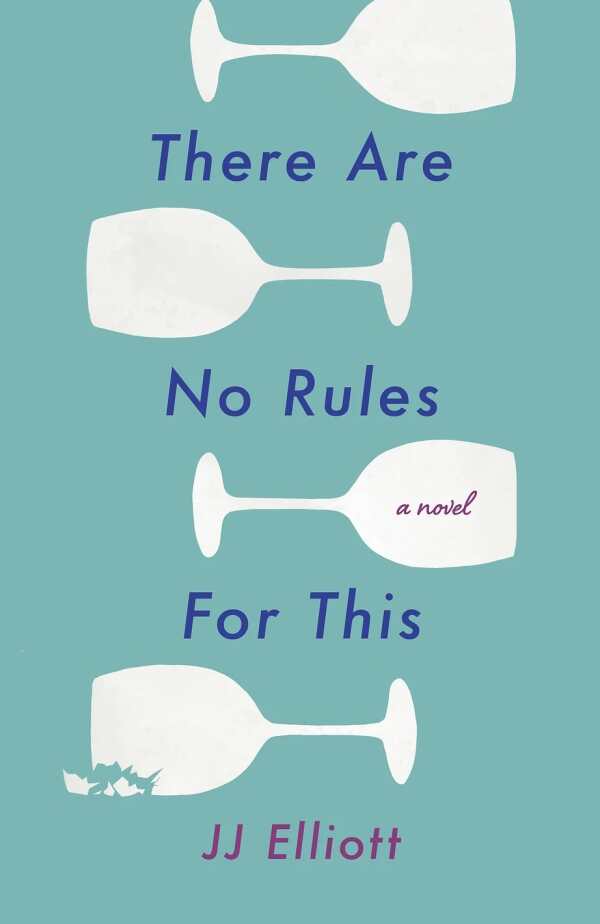There Are No Rules for This
A Novel
Celebrating women’s connections with heartfelt wit and emotion, the novel There Are No Rules for This is about unabashed grief and intentional joie de vivre.
In JJ Elliott’s novel There Are No Rules for This, an unexpected suicide impacts a group of close-knit friends.
In the summer of 2015, Ali, Max, Liddy, and Feeney live in Healdsburg, a “shop-lined, green squared town” in Sonoma wine country. The women have been friends for decades—with the exception of Feeney, who moved to California from New York. Though all of the friends had careers prior to getting married, they have now opted to either be stay-at-home mothers or work in less demanding positions.
Amid a general routine of domestic obligations, school carpools, and yoga classes, the friends meet for Wine Wednesdays. During this weekly indulgence, they relax, share confidences, and laugh and cry together. Lulled into feelings of false security because of their closeness, Feeney’s friends are devastated when she takes a deliberate overdose and dies.
As the book’s forthright and assessing narrator, Ali relates her friends’ strengths and vulnerabilities. Max is eclectic and sharp-minded, while artistic and perceptive Liddy is the mother of a child with Down syndrome. Liddy also has an unfaithful spouse. In flashbacks, whimsical Feeney is haunting and intriguing: she sets the clocks in her home to odd hours, is a passionate Kenny Loggins fan, and demands to eat at an upscale restaurant without “sponge-off” menus for her birthday. But though Feeney’s Healdsburg life might be considered idyllic, she recalls her earlier years in Manhattan with longing; she felt confident and integral in the city, able to be both “somebody and nobody” among the crowds.
As the story progresses, anguish alternates with humor. A journal found in Feeney’s closet offers some insight into her mental state yet reveals no definite reasons for her suicide. As Ali goes through Feeney’s wardrobe with melancholy respect, the garments of “silk, cotton, cashmere and wool” become tactile memories. And when Feeney’s exacting mother commandeers her daughter’s funeral, Ali, Max, and Liddy decide to hold their own memorial services while they are still living. After planning services that reflect their distinct personalities, they are able to attend their preemptive funerals and hear the respective expressions of joy and grief.
While the novel’s flashbacks are varied and revelatory, there is at times a sense of compressed healing in the aftermath of Feeney’s death. Because the story’s focus is on the surviving friends, the women’s husbands are characterized in more peripheral terms. Ali’s husband, Drew, shows notable compassion as she processes her intense feelings of grief. And though Ali praises Max’s husband’s excellent manners and keen fashion sense, she also adopts a cringeworthy stereotype in discussing him, joking, “How again is this man not gay?”
Though the novel is a portrait of loss, it achieves wholeness through its remembrances of the enduring friendship among Ali, Max, Liddy, and Feeney. In their early forties, these women are at an age when women’s camaraderie can be minimized by family obligations or enforced perceptions of midlife maturity. Yet before and after Feeney’s death, the friends continue to prioritize their shared bond and need for occasional spirited adventures.
A dear friend dies in the novel There Are No Rules for This, prompting the women who loved her to contemplate life’s tragedies and joys.
Reviewed by
Meg Nola
Disclosure: This article is not an endorsement, but a review. The publisher of this book provided free copies of the book and paid a small fee to have their book reviewed by a professional reviewer. Foreword Reviews and Clarion Reviews make no guarantee that the publisher will receive a positive review. Foreword Magazine, Inc. is disclosing this in accordance with the Federal Trade Commission’s 16 CFR, Part 255.

